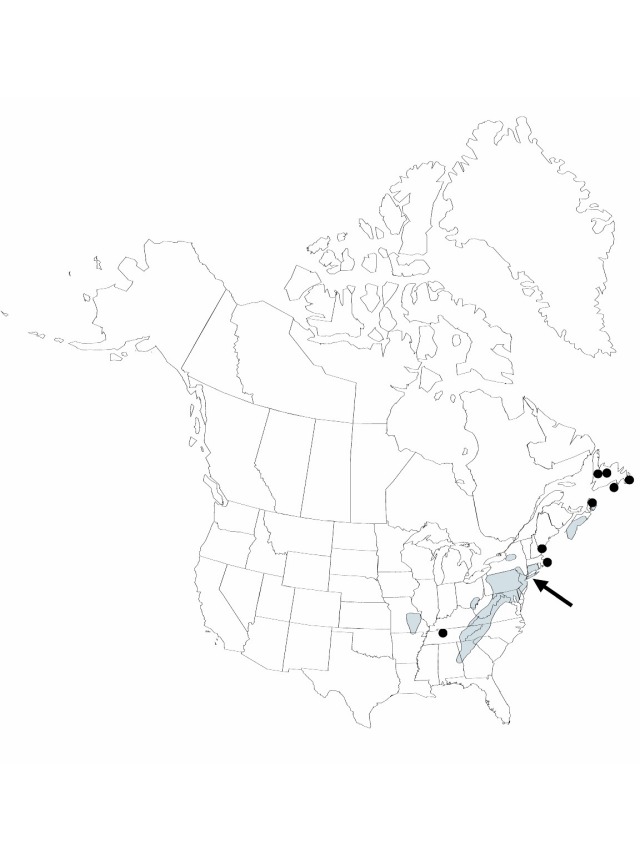Juncus subcaudatus
Proceedings of the Biological Society of Washington 31: 45. 1918.
Herbs, perennial, cespitose, 1.5–6 dm. Culms erect, 1–3 mm diam., smooth. Cataphylls 0–1, straw-colored, apex acute. Leaves: basal 1, cauline 1–3; auricles 0.5–1 mm, apex rounded, scarious; blade terete, 4.5–15 cm × 1–2 mm. Inflorescences panicles or racemes of 3–35 heads, 2–16 cm, branches widely spreading (at least the proximalmost); primary bract erect; heads 2–10 (–20) -flowered, obconic to nearly spheric, 3–9 mm diam. Flowers: tepals greenish, becoming straw-colored, lanceolate; outer tepals 1.8–3 mm, apex acuminate; inner tepals 2–3.2 mm, apex acuminate; stamens 3, anthers 1/3 filament length. Capsules exserted, straw-colored, imperfectly 3-locular, ovoid to prismatic, 3–3.8 mm, apex acute proximal to beak, valves separating at dehiscence. Seeds ellipsoid, 0.7–1.2 mm, tailed; body covered with whitish translucent veil.
Phenology: Fruiting late summer–fall.
Habitat: Stream banks, lake and pond shores, bogs, and other wet places
Elevation: 0–1000 m
Distribution

Nfld. and Labr. (Nfld.), N.S., Ala., Ark., Conn., Del., D.C., Ga., Ill., Ky., Maine, Md., Mass., Mo., N.J., N.Y., N.C., Ohio, Pa., R.I., Tenn., Va., W.Va.
Discussion
Selected References
None.